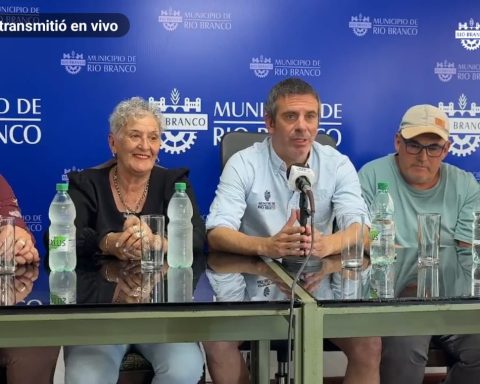The publication of the 2021 poverty data confirmed a drop in this record among the child population in Uruguay compared to 2020, but it remains above the pre-pandemic records (in all age groups) and this revealed a lack of rigorous and methodological management. of the main authorities of the Executive Branch in the midst of the campaign for the referendum.
In February, at a conference on the macroeconomic situation and perspectives, the Ministry of Economy referred to the poverty numbers after a 2020 with a significant increase marked by the pandemic. The Minister of Economy, Azucena Arbeleche decided to highlight a fact: the reduction of child poverty in the range from 0 to 6 years in the first half of 2021 compared to the annual data for 2019, the last one before the pandemic.
“When yesterday (for Tuesday, February 15) the Minister of Economy gave the number of children who have come out of the poverty level… (the population of poor children) is a lower number than it was before the pandemic“, highlighted the president Luis Lacalle Pou on February 16 at a press conference.
In a context of increased poverty compared to 2019 in all groups, The minister decided to highlight the only variable that showed a reduction and that, according to what she said, was due to government policies.
At that conference, Arbeleche assured that poverty was reduced more in households that are “headed by women”, which “is due to the targeting” of support given to children. “This has also reduced poverty more in childhood, in children between 0 and 6 years old.”, he assured.
The director of Economic Policy, Marcela Bensión, expressed herself along the same lines. In an interview with Las cosas on her radio site Sarandí, the hierarch said that she decided to particularly highlight the reduction of poverty levels between 0 and 6 years old because the government “has a special focus on children”, particularly from 0 to 3 years old, who are the ones targeted by the so-called “early childhood program” .
The hierarch explained that said program “involves allocating US$50 million per year” to early childhood because it is understood that the situation of these children “is critical” and “they will be the men and women who will sustain this country tomorrow.” .
Finally, he summarized that “with respect to 2020 there was a general reduction, and particularly in the group from 0 to 6 there were reductions with respect to other years of measurement. These are public data and that is the reality of the situation. A lot has been armed stir with this issue and it seems important to us to clarify that this is so,” said the director of the MEF.
In that comparison, child poverty in that strip went from 17% in 2019 to 16.1% in the first half of 2021. In the rest of the ages, the poverty rate continued to be above pre-pandemic records.
Beyond choosing to highlight the only fact that somehow left the government in a good position, Both the president and the leaders of the MEF made a methodologically questionable comparison when comparing annual data against semi-annual information.
When the semi-annual data was known some economists asked to take with caution the information and this type of comparisons. On December 9 of last year, when the poverty figures were already public, the economist Gabriel Oddone suggested taking the numbers carefully at the Economic Forum that ACDE holds annually.
Poverty in 2019 had been 8.8%, in 2020 it was 11.6% and it had just been known that in the first half of 2021 it had dropped to 10.2%.
On that occasion, Oddone warned that “Poverty has seasonal factors in its determinants, because bonuses are collected when they are collected, vacation salaries are collected when they are collected, that affects income and that has effects on the level of poverty”.
The data for the second semester, published this week, indicate that poverty in children from 0 to 6 years old grew from 16.1% to 21% between one half of the year and the other. As it is the first time that the INE publishes numbers in six-month periods, it remains to be seen whether it is a variation that is repeated every year. And in the annual comparison, poverty in the age group from 0 to 6 years old went from 17% in 2019 to 18.6% in 2021. That is, like all the other age groups, it remains above the pre-pandemic level.
Even in the general data, the information for the first semester suggested that 50,000 people had come out of poverty – of the 100,000 who had entered the pandemic – but the annual data reduced that figure to 35,000.
The time, and the annual data, They agreed with those economists who warned about the seasonality of the data and pointed out that what both Arbeleche and Lacalle did was, at least, hasty and methodologically questionable.
















